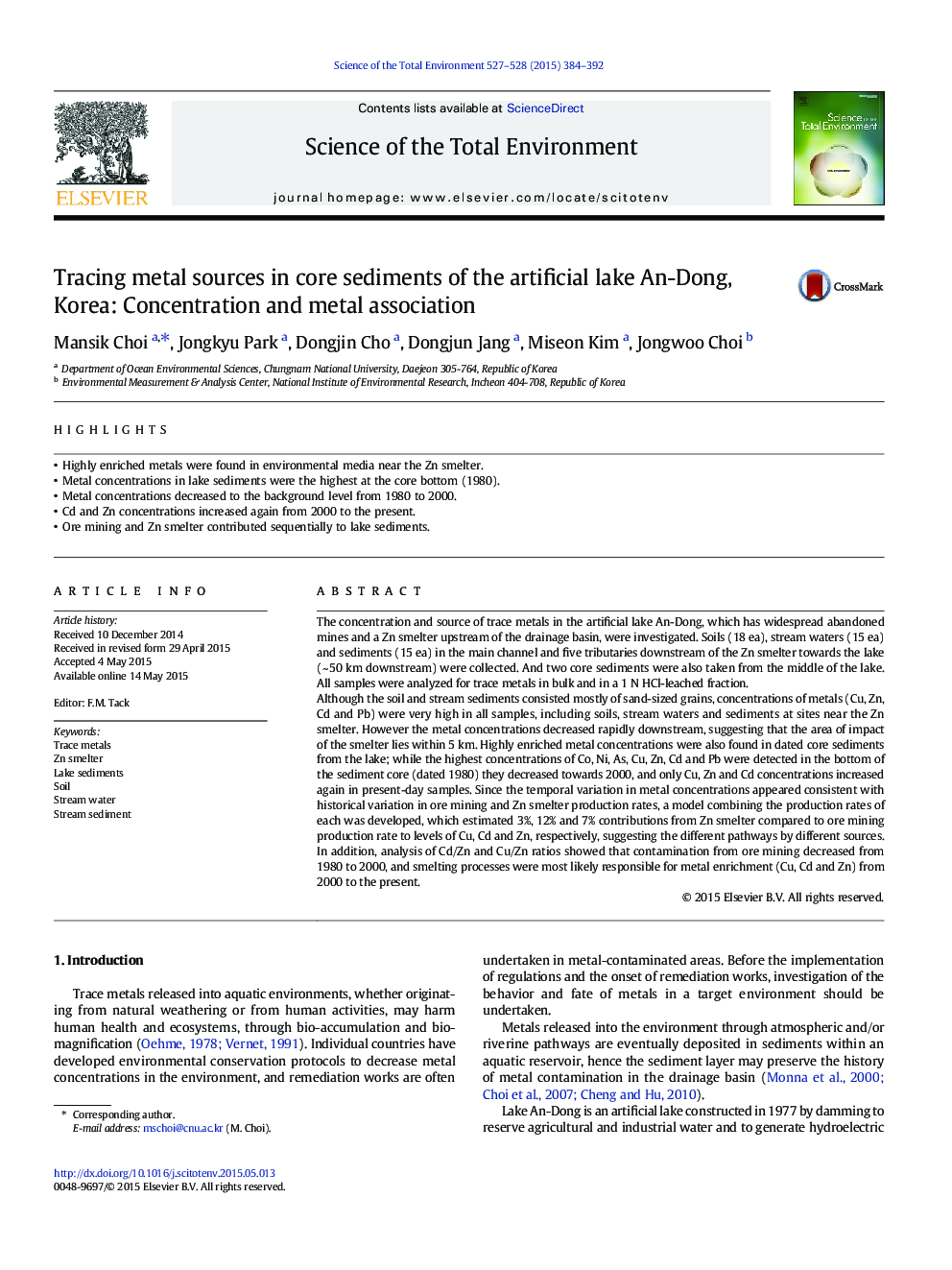| Article ID | Journal | Published Year | Pages | File Type |
|---|---|---|---|---|
| 6326502 | Science of The Total Environment | 2015 | 9 Pages |
Abstract
Although the soil and stream sediments consisted mostly of sand-sized grains, concentrations of metals (Cu, Zn, Cd and Pb) were very high in all samples, including soils, stream waters and sediments at sites near the Zn smelter. However the metal concentrations decreased rapidly downstream, suggesting that the area of impact of the smelter lies within 5Â km. Highly enriched metal concentrations were also found in dated core sediments from the lake; while the highest concentrations of Co, Ni, As, Cu, Zn, Cd and Pb were detected in the bottom of the sediment core (dated 1980) they decreased towards 2000, and only Cu, Zn and Cd concentrations increased again in present-day samples. Since the temporal variation in metal concentrations appeared consistent with historical variation in ore mining and Zn smelter production rates, a model combining the production rates of each was developed, which estimated 3%, 12% and 7% contributions from Zn smelter compared to ore mining production rate to levels of Cu, Cd and Zn, respectively, suggesting the different pathways by different sources. In addition, analysis of Cd/Zn and Cu/Zn ratios showed that contamination from ore mining decreased from 1980 to 2000, and smelting processes were most likely responsible for metal enrichment (Cu, Cd and Zn) from 2000 to the present.
Related Topics
Life Sciences
Environmental Science
Environmental Chemistry
Authors
Mansik Choi, Jongkyu Park, Dongjin Cho, Dongjun Jang, Miseon Kim, Jongwoo Choi,
